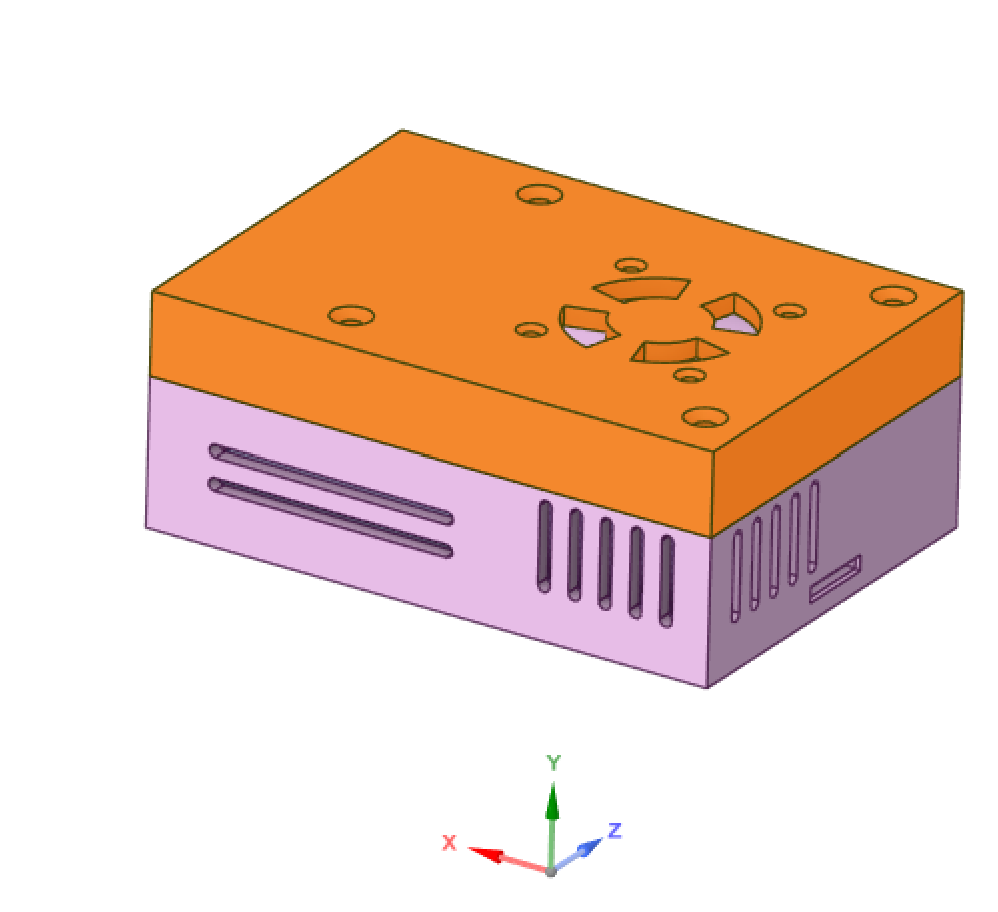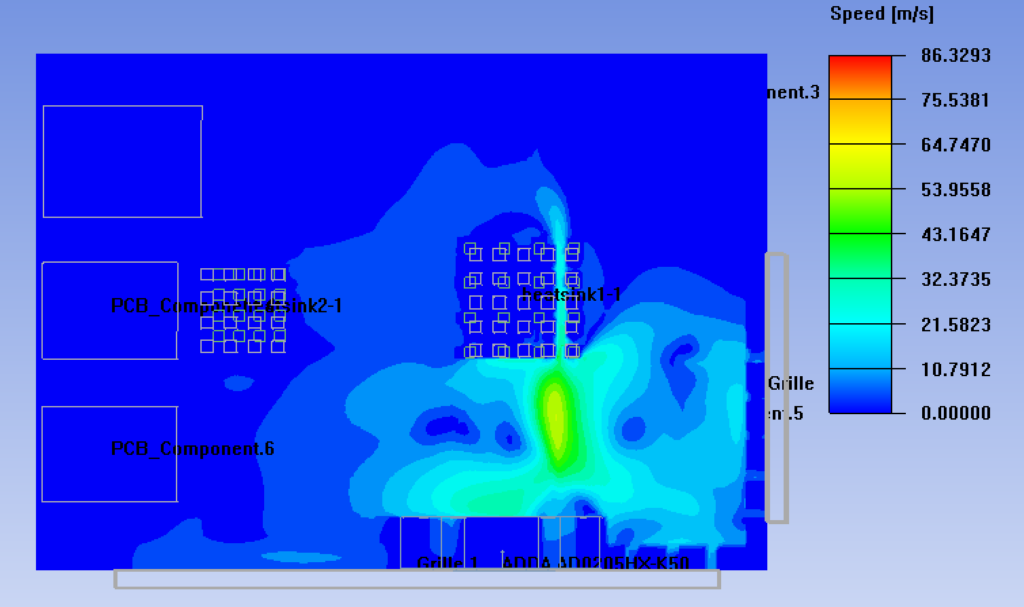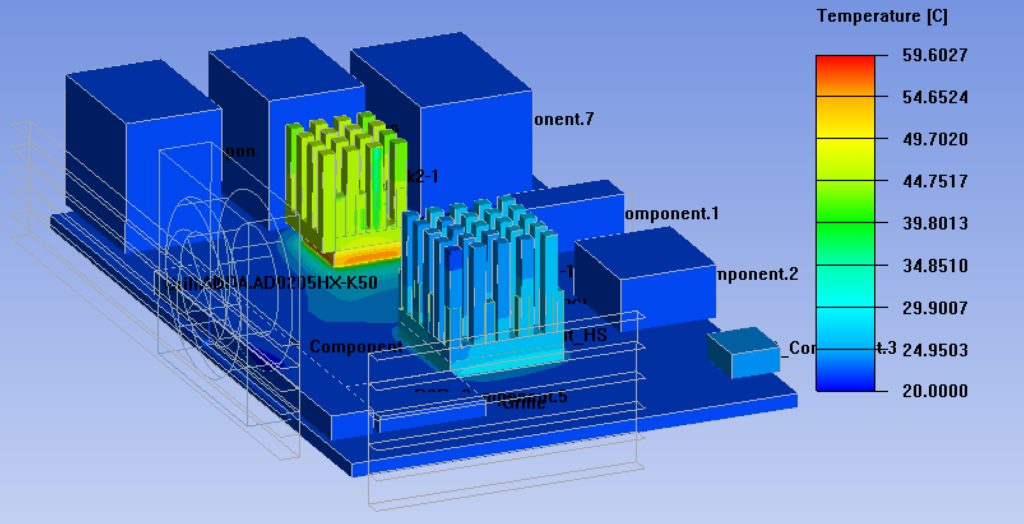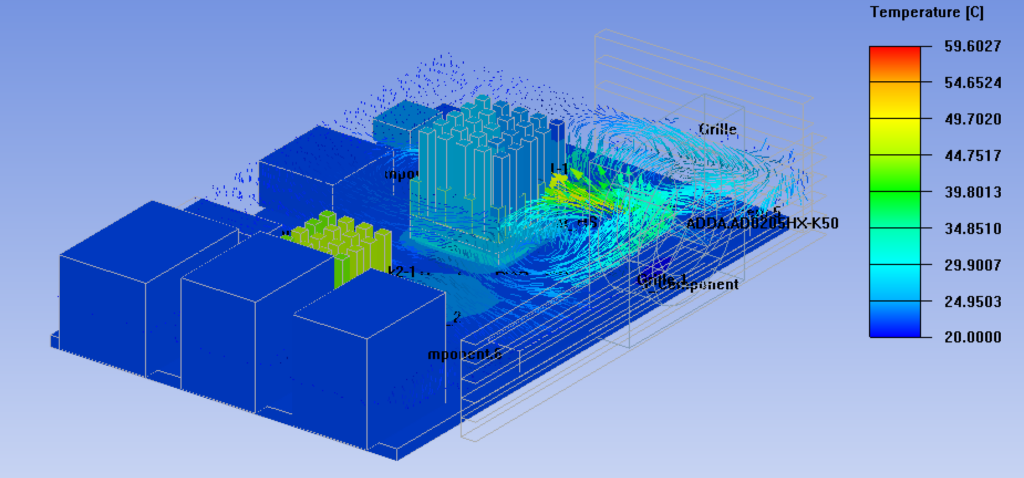The study of airflow and thermal management within electronic enclosures is crucial to ensuring reliable operation and preventing overheating. In this analysis, a Computational Fluid Dynamics (CFD) simulation was conducted on a ventilated enclosure to evaluate airflow distribution and temperature variations under operational conditions. The results provide valuable insights into cooling performance and potential design improvements.

The first image illustrates the enclosure design, consisting of two main parts: an upper cover and a lower vented section. The design includes multiple ventilation slots and a fan opening, aiming to enhance airflow circulation and facilitate heat dissipation from internal components.

Key observations from the velocity contour include:
- The highest airflow velocity occurs at the fan outlet as expected.
- Air distribution has areas of stagnation near the PCB components.
- The airflow effectively cools regions near the fan, but some components may experience lower cooling efficiency.


The third and fourth images depict the thermal distribution of internal components. Key insights include:
- The maximum temperature recorded is approximately 59.6°C, concentrated around the heat sinks.
- Heat sinks play a crucial role in dissipating heat from high-power components, with temperature gradients observed along their fin structures.
- Components positioned further from the airflow stream show higher localized heating, suggesting a need for improved airflow design.
Based on the CFD analysis, several recommendations can be made to enhance thermal performance:
- Optimize Fan Placement: Adjusting the fan position to direct airflow towards critical heat-generating components could improve cooling efficiency.
- Enhance Ventilation Design: Additional vent openings or repositioning existing slots may help distribute airflow more evenly.
- Improve Heat Sink Efficiency: Modifying the fin geometry or material properties of the heat sinks could further enhance heat dissipation.
- Implement Active Cooling Mechanisms: If necessary, additional fans or liquid cooling solutions could be considered for extreme thermal loads.
The results of this study provide a foundation for optimizing electronic enclosure cooling, ensuring improved performance and reliability in real-world applications.

